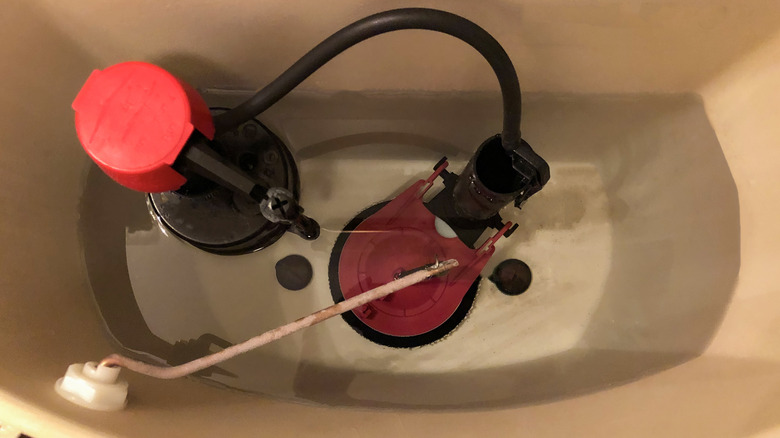How To Know If You Need To Replace Your Toilet Flapper
If you notice your toilet is constantly running, the tank is taking longer to fill, or your toilet has been flushing itself, there isn't a ghost in your bathroom, but it's probably time to replace your toilet flapper. The flapper is a rubber stopper inside the tank of the toilet, which is attached to the chain. When you flush your toilet, the flapper lifts to allow fresh water to enter the toilet bowl.
While a broken toilet flapper might not seem like a big deal, ignoring it can cause several issues and also become quite costly. A leaky toilet can use up to 200 gallons of water in just one day, adding up to 6000 gallons in a month. This can cause your water bill to skyrocket if not addressed. A broken flapper can also decrease the water pressure, causing the toilet to have problems flushing.
How to tell if your toilet flapper is broken
Sometimes, you may not even notice that the flapper is causing a leak. Smaller leaks are quieter and can easily go unheard, but they can still go through a lot of water in a day. If you notice an increase in your water bill and want to test for small leaks, add a few drops of food coloring to your toilet's tank without flushing. Wait for at least 30 minutes, and if the water in your toilet bowl is colored, there's a leak caused by your flapper.
You might also notice pieces of rubber in the tank or in the bowl after you flush. These are parts of the flapper that have broken off. If the flapper is warped rather than broken, it may not look damaged, but it won't be able to seal properly. Flappers typically last between three and five years, and it's best to replace them once they start to wear out.
What causes a broken toilet flapper
While many flappers become worn with age, some are damaged from bacteria, mildew, or mold. The chemicals in certain toilet bowl cleaners, particularly the kind you drop into the tank, can also be rough on the rubber of the flapper, causing it to fall apart more quickly. Hard water is another culprit of leaky toilets. Over time, the minerals in hard water can accumulate on the inside of the flapper, which can cause it to warp.
Sometimes, the issue has to do with the chain rather than the flapper itself. If the chain is too long or too loose, it can get stuck between the flapper and the opening of the toilet bowl. This will also cause the toilet to run. If the chain is too short or too tight, the flapper won't be able to close completely. You can check for this by seeing if the handle of the toilet holds a lot of tension. Whatever causes your flapper to stop functioning properly, it's best to replace it as soon as you notice an issue.


